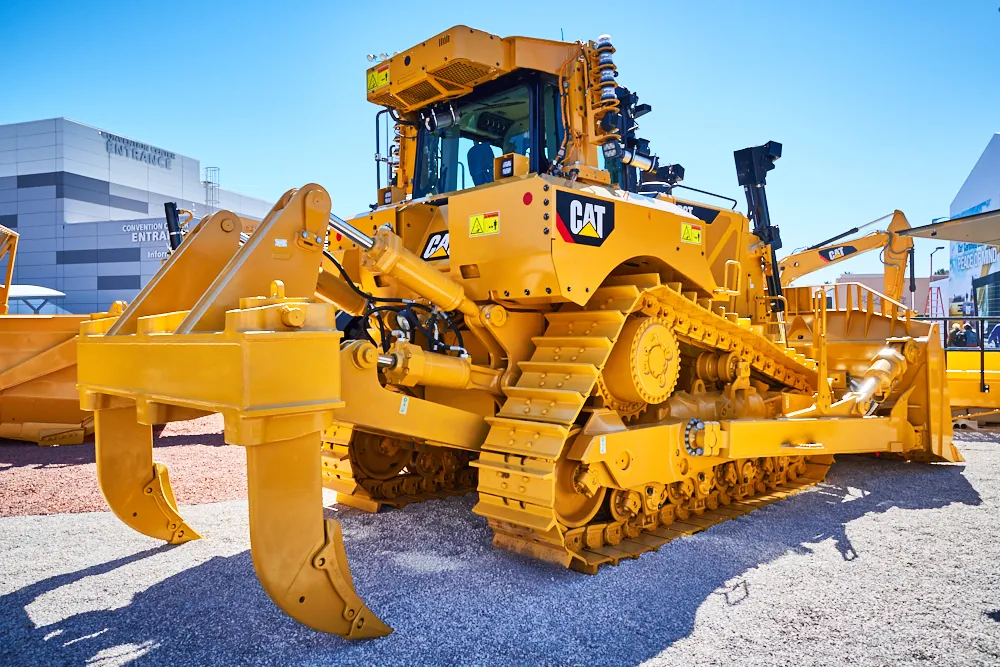
From its Gold Lot stand,
The CAT Command remote control system offers a choice of two operator interfaces - a portable operator console designed for line-of-sight use and an ergonomically-designed operator station that can be located remotely. When the dozer is equipped with the Command Vision System and wireless connectivity it enables the operator to work from a remote location, enhancing site and operator safety.
According to Brad Van De Weer, CAT Market Professional, heavy equipment, the system feels as though you are actually operating from the cab.
“Although we are 1,700 miles away, we have full controllability of the machine,” he said. “If I turn the throttle up and release the park brake I can raise the blade up and down, turn it right and left, I can raise and lower the ripper and control the travel controls on the left hand side of the controls.”
“It’s as if you were in the machine itself, very little time delay with operation, it’s very controllable, smooth and productive. The camera systems are placed in areas to simulate the operator’s view from the cab, but you actually gain in terms of perspective. The features and benefits are focused on safety - we don't want operators putting themselves in danger.”
“The system was initially developed for mining applications being installed on our D10 and D11’s. Now that it’s been made available on our construction line, there’s a lot of demand for it on our D8T. We are focused on dozers for now but we’re looking to implement this technology in wheel loaders and excavators soon.”
“Visitors to the stand will be able to operate the machine let it track around the course and to get an idea of how the controls feel and operate,” he said.









